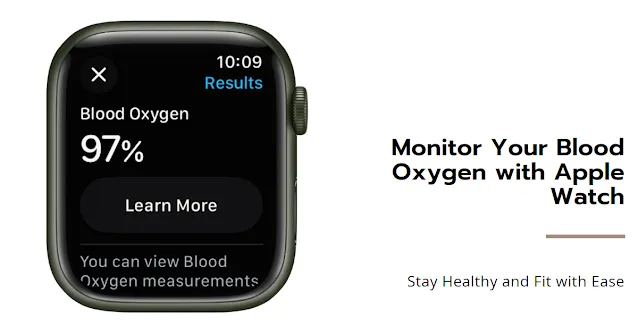Stay aware of your health with a powerful new feature – Apple Watch's blood oxygen monitoring. This capability empowers you to understand your overall wellness and gain valuable insights into your respiratory and cardiovascular health.
What is Blood Oxygen?
Blood oxygen, measured as SpO2, signifies the percentage of oxygen carried by red blood cells from your lungs to the rest of your body. Healthy levels typically range from 95% to 100%. Lower values can indicate underlying health concerns, making self-monitoring valuable.
How Does Apple Watch Measure Blood Oxygen?
Apple Watch utilizes advanced sensors and algorithms to estimate SpO2 levels. Green and red LEDs shine through your wrist, and the amount of red light absorbed by your blood is measured. This data is then used to determine your blood oxygen level.
Key Features and Benefits:
- On-Demand Measurements: Take a quick measurement anytime, anywhere for immediate insights.
- Background Readings: Track your SpO2 levels periodically throughout the day while you're still.
- Notifications: Receive alerts if your SpO2 falls below a predefined threshold, potentially indicating a health concern.
- Health App Integration: View detailed trends and historical data for comprehensive analysis.
- Improved Wellness: Gain valuable insights into your fitness and overall health.
Using the Blood Oxygen App:
- Ensure Compatibility: Check if your Apple Watch model (Series 6 or later, Ultra) and region support the Blood Oxygen app.
- Set Up: Follow the on-screen instructions in the Health app on your iPhone.
- Take a Measurement: Open the Blood Oxygen app, stay still, and keep your wrist flat for 15 seconds.
- View Results: Check your SpO2 level and associated metrics on the app.
- Monitor Trends: Track your SpO2 variations over time in the Health app.
Important Considerations:
- Not a Medical Device: Blood Oxygen app readings are for informational purposes only and should not be used for medical diagnosis or treatment.
- Accuracy: Factors like skin tone, motion, and high heart rate can influence accuracy.
- Seek Professional Advice: If you have concerns about your SpO2 levels, consult a healthcare professional.





0 Comments